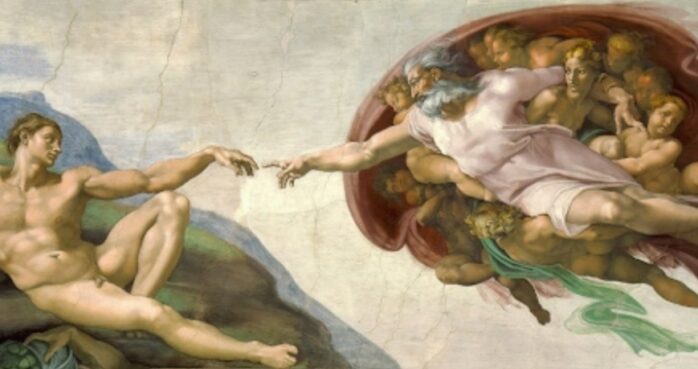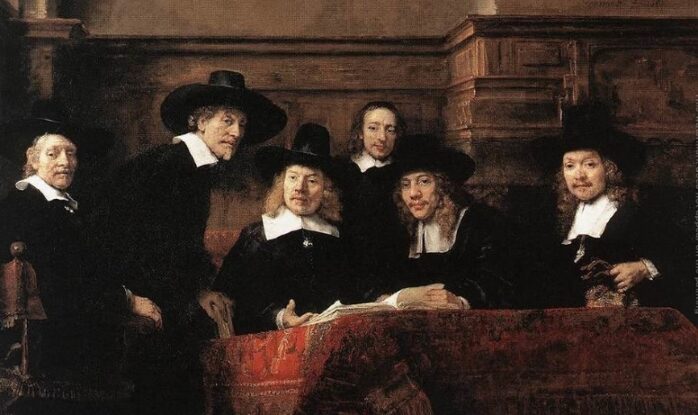As artists use canvas nowadays for almost all types of paintings and even for photo prints, many think that artists have always used canvas to paint on. But the use of canvas is a relatively new material for paintings in the Western world.
For years artists painted on solid materials like cave walls, buildings, and wood as it was more firm and had a long life. It was only since the Renaissance that they started using canvas. Nowadays the most popular material to paint or print on is a canvas.
Read on if you want to know more about the interesting history of the rise of canvas in art – from oil paintings to photo prints.

Before Canvas
Cave Paintings: The oldest examples of paintings are to be found in caves. The oldest known cave paintings were created more than 44,000 years ago. The figures were painted on the rock walls of the caves.
Egyptian And Other: Ancient Egyptian art between the 31st century BC and the 4th century AD included paintings and drawings on papyrus. There are also many murals dating from about 1900 BC where the painting was done in the tombs on limestone.
Fresco Painting: Fresco painting is when water-based pigments are applied on plaster, usually wall surfaces, and then left to dry and set. In Western art history, it was made famous during the Renaissance. Many painters from the late 13th to the mid-16th century used this style. “The Creation of Adam” by Michelangelo is a well-known fresco example.
Painting On Wood: In the 15th-century artists in Western Europe started to produce oil paintings regularly. Generally, such works were painted on wooden panels. Jan van Eyck’s painting “Ghent Altarpiece – Adoration of the Lamb” is an excellent example of oil on wood.

Venetian Artists Started To Use Canvas To Paint On
Originally canvas was made from tightly woven hemp. Painters started to use it during the Italian Renaissance in the 16th century. Venetian painters were looking for new material to paint on. It was difficult to paint frescos due to the poor drying capabilities of walls in the Venetian climate.
They also had problems when painting on wood as the wood panels absorbed moisture and twisted out of shape. They turned to canvas to cope with the humid environment. Canvas was available and cheap as the material was also used to make sails for the Venetian fleet. “Drunkenness of Noah” by Bellini was done on canvas.
Advantages Of Canvas
Over time canvas has replaced wood panels to paint on. It does not have the moisture retention of wood and doesn’t twist after a while. It also allows artists to create a larger format for their paintings. A painting on canvas can be rolled up and easily be transported. It also less prone to cracking or warping than paintings on wood.

How Is Canvas Made?
Originally hemp and linen were used to make a canvas. Nowadays most industrial canvases are made using cotton. The cotton is woven by using a plain weave to increase its strength. Artists can select a canvas based on how tightly the cotton is woven.
After being woven, the canvas is wrapped around wooden stretchers. It is then prepared as a canvas to be painted on by using gesso as a base. William Turner paintings on canvas are considered to be a brilliant example of how painters can use canvas and create long living paintings. This gesso layer prevents decay of the painting as the oil paint won’t come directly in contact with the canvas. Since the Renaissance, artists have gone to great lengths to ensure their preparatory layers like gesso hide the texture of the canvas.
The Venetian Idea In Rest Of Europe
By the 17th century, the Italian Renaissance idea to use canvas instead of wood had spread throughout Northern Europe. Rembrandt art “Sampling Officials of the Drapers’ Guild” is an example of Dutch painters using canvas.
Until today canvas has become the main material artists use to paint on. Originally canvas was exclusively used for oil paintings. Nowadays all types of paint are used on canvas. It is now used for oil, acrylic paint, and even embroidery. Photo canvas prints are also very popular.
Photo Canvas Prints
In the 21st century with the help of technology more and more artists prefer to use gadgets for painting. For this there are some descriptions. Here are some of them:
- It is easier to paint with the help of new technology
- It is cheaper, as an artist will not spend money to buy the necessary materials
- It is easy to keep
Modern artists are often turning toward the digital printing of their art. Since the 1990s, photographers have also started to create canvas prints. They present their photo artworks in the same way as painters. This digital possibility allows you to feel like a master artist without using any paint or brush!

Conclusion
Through artworks where painted on wood, walls and on the other firm materials during the time they started using canvas for creating masterpieces and in this way remain in the history.
Artists throughout the ages especially during the Renaissance movement time have always found something to draw or paint with oil on canvas. Canvas as material for artworks has a long history and it seems as if it is here to stay long centuries in future. Unlike many other things which were used in ancient times and forgotten in the modern world, as today’s artists do not use them that is why they are disappearing as technology is taking over, the use of canvas is flourishing. Canvas art painting is still continuing to be popular with artists but is just as popular with modern art photographers. Maybe it seems that modern art photography is the future of art but many painters are sure that the canvas is a lifelong kind of type and will continue to be used and not lose its value in future, as it has a long history to make for our future generations.
The post Short History of the Canvas: From Oil Painting to Photo Prints appeared first on FotoLog.
from FotoLog https://ift.tt/3qUZ4Re
via IFTTT


0 Comments